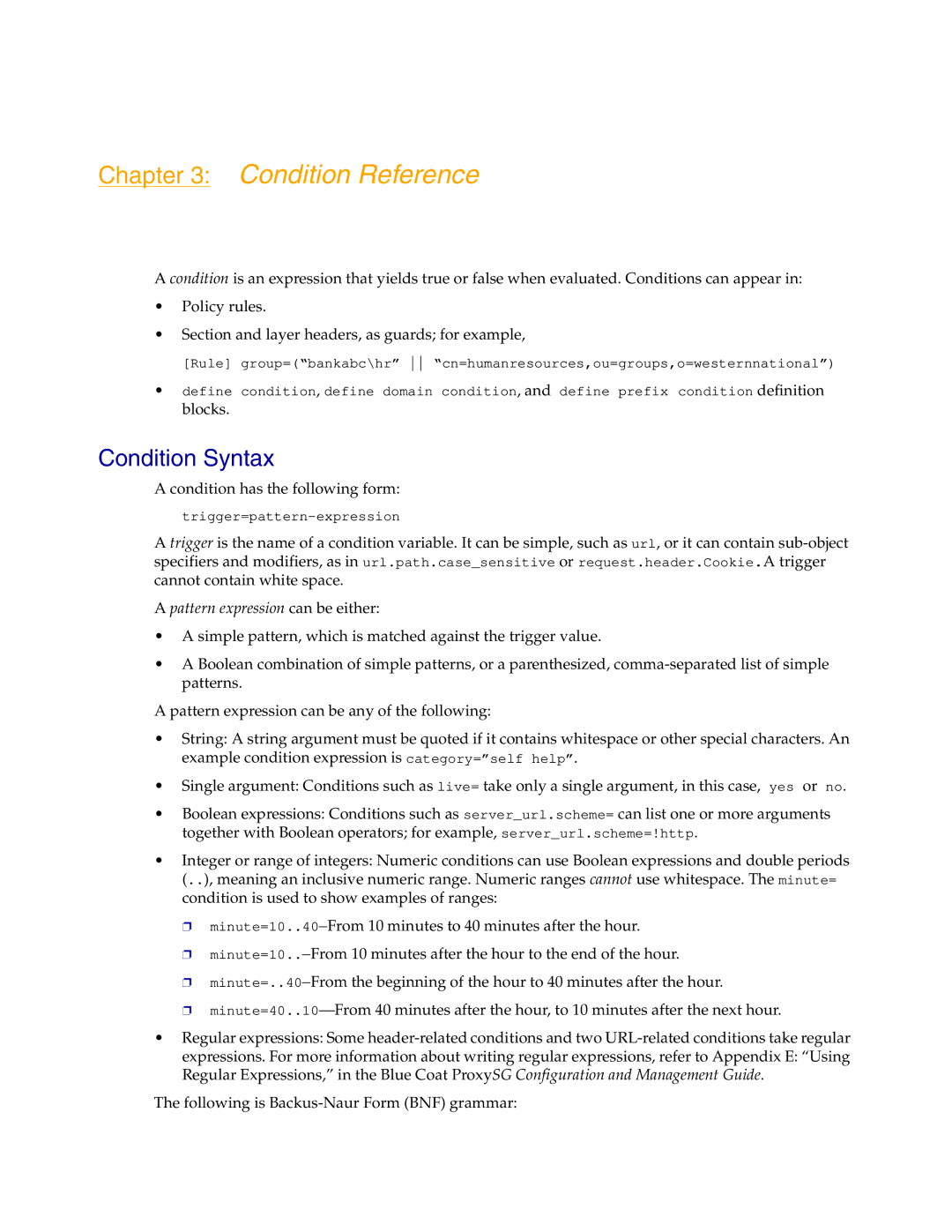Chapter 3: Condition Reference
A condition is an expression that yields true or false when evaluated. Conditions can appear in:
•Policy rules.
•Section and layer headers, as guards; for example,
[Rule] group=(“bankabc\hr” “cn=humanresources,ou=groups,o=westernnational”)
•define condition, define domain condition, and define prefix condition definition blocks.
Condition Syntax
A condition has the following form:
A trigger is the name of a condition variable. It can be simple, such as url, or it can contain
A pattern expression can be either:
•A simple pattern, which is matched against the trigger value.
•A Boolean combination of simple patterns, or a parenthesized,
A pattern expression can be any of the following:
•String: A string argument must be quoted if it contains whitespace or other special characters. An example condition expression is category=”self help”.
•Single argument: Conditions such as live= take only a single argument, in this case, yes or no.
•Boolean expressions: Conditions such as server_url.scheme= can list one or more arguments together with Boolean operators; for example, server_url.scheme=!http.
•Integer or range of integers: Numeric conditions can use Boolean expressions and double periods (..), meaning an inclusive numeric range. Numeric ranges cannot use whitespace. The minute= condition is used to show examples of ranges:
❐
❐
❐
❐
•Regular expressions: Some
expressions. For more information about writing regular expressions, refer to Appendix E: “Using Regular Expressions,” in the Blue Coat ProxySG Configuration and Management Guide.
The following is
